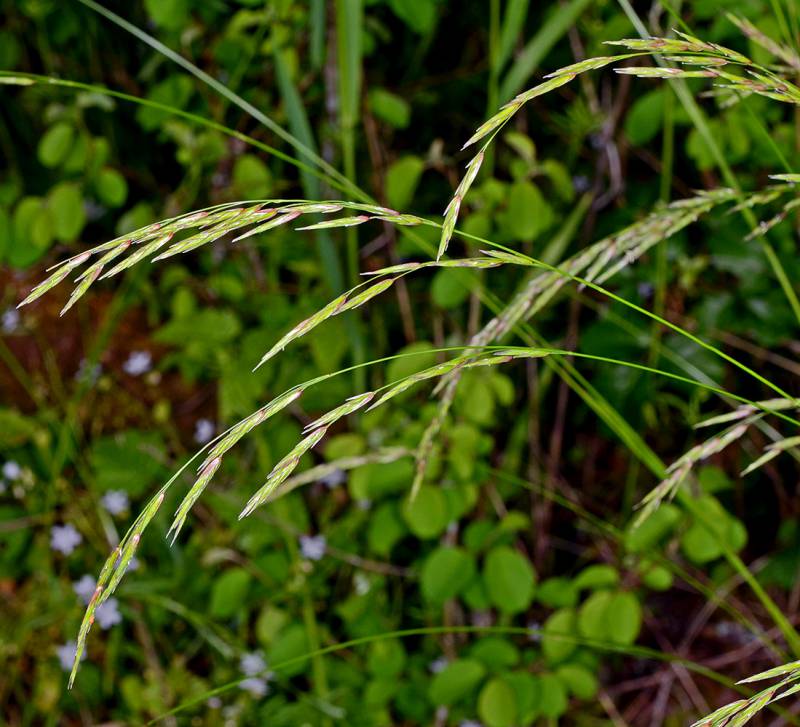Melica aristata
Melica subulata
bearded melic grass
Alaska oniongrass
Sheaths closed nearly to the top, usually spreading-pubescent;
ligules 1-5 mm. long, glabrous, often closed but usually split, somewhat lacerate;
blades usually flat, 2-7 mm. broad.
Inflorescence a narrow panicle 10-20 cm. long, the few branches ascending to erect;
spikelets loosely 2- to 5-flowered, 12-20 mm. long;
rachilla joints 2.5-3 mm. long;
glumes pointed, the first 5-6.5 mm. long, the second 7.5-9 mm. long;
lemmas acuminate but unawned, 9-13 mm. long;
paleas at least 2/3 as long as the lemmas;
spikelets with 2-several perfect flowers, but the upper 2-4 flowers sterile, forming a spindle-like body about 5-8 mm. long.
Melica aristata
Melica subulata
Known historically in Washington from the Lewis River in Skamania County, but now best considered extirpated in Washington; southern Washington to California.
Occurring on both sides of the Cascades crest in Washington; Alaska to California, east to the Rocky Mountains and northern Great Plains.
- Local floras:
CA,
OR,
WA
- Local Web sites:
CalFlora,
CalPhotos,
Flora NW,
PNW Herbaria
WildflowerSearch
iNaturalist (observations)
USDA Plants Database
- LBJ Wildflower Center
- SEINet
- Plants of the World Online
- Encyclopedia of Life
- Wikipedia
- Google Image Search
- Local floras:
BC,
CA,
OR,
WA
- Local Web sites:
CalFlora,
CalPhotos,
Flora NW,
PNW Herbaria
WildflowerSearch
iNaturalist (observations)
USDA Plants Database
- LBJ Wildflower Center
- SEINet
- Plants of the World Online
- Encyclopedia of Life
- Wikipedia
- Google Image Search


